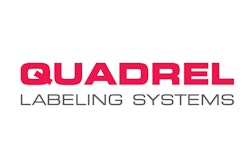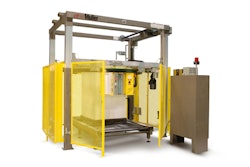Summer Garden Food Manufacturing is an innovator of premium and super-premium sauces, dressings, and toppings with distinctive flavor profiles. Now, the company has gained the technological capability to execute a highly efficient manufacturing and packaging operation that is on equal footing with its product quality.
The company’s new $12 million, 54,000-sq-ft facility in Boardman, OH, demonstrates that adopting unconventional plant operation technologies can deliver energy savings of 20% or more with an acceptable payback period and ROI. These results are achievable while automating package production operations to meet the growing demand for Summer Garden Food products. With the new facility and production line, sales volume has surpassed previous annual growth rates of 15% annually. Pasta sauce production alone has reached 5 million units annually-exponential growth for a company with humble origins preparing spaghetti dinners for local churches.
Summer Garden Food has been meeting the increasing demand for its products while also saving tens of thousands of dollars annually in plant pumping, heating, and cooling costs, and by reducing water consumption. That’s only the beginning; future additional refinements to the manufacturing and packaging operations should bring further savings.
“We don’t look at ourselves as a distributor and food manufacturer,” says John Angelilli, the company’s CFO, COO, and sustainability officer. “We’re a culinary foods company that can control the R&D and the production, done in a way that is sustainable and repeatable. We had people willing to challenge the way things have always been done.”
Summer Garden Food is perhaps best known for its Gia Russa lineup of 250 items, from sauces to pasta. It also makes and packs sauces and dressings for customers including Guy Fieri and Mario Batali. The company also ships to more than 8,000 grocery stores.
Higher volume, bigger needs
Rising up from its early local days, Summer Garden Food, under the leadership of Thomas Zidian, son of founder John Zidian, branched out into retail and distribution of branded products. It eventually outgrew its mostly manual operation. Besides U.S. expansion, Summer Garden Food was also growing a substantial private-label and contract packaging specialty foods and pasta business. As a result, the company decided in 2006 to begin planning for a large manufacturing and packaging facility in Boardman.
That decision put Summer Garden Food at a crossroads. The company had to answer this question: How far do we want to push the envelope in designing the new manufacturing and packaging plant? At the time, Summer Garden Food was an essentially manual operation operating beyond capacity. With the automated plant it envisioned, it would be operating at 20% of capacity. The company made the commitment to go “all in” on the automated facility and push the design to the limit to stress both production and energy efficiency. The plant would become a LEED-certified (Leadership in Energy and Environmental Design) production and office facility. It enlisted the help of Darrell Wallace as senior technical adviser for what would become a more than three-year project. Wallace is assistant professor in the Industrial and Systems Engineering Program at nearby Youngstown State University, and his background includes engineering food processing systems.
Wallace, with the help of graduate students at Youngstown State, worked with Angelilli and a multidisciplinary design team to set up the new plant. Wallace notes that Summer Garden Food’s decision to invest in a LEED-certified production facility is unusual, and two critical factors made the project successful. One was getting the right people from many different disciplines involved and the other was integrating LEED certification guidelines into the earliest phases of project design.
“The integrated design partnership, which included suppliers, made changes in conventional plant thinking and did things that hadn’t been done before,” Wallace explains. He describes this approach as the “secret sauce” to Summer Garden Food’s success. “They challenged the status quo of what some of these people had spent entire careers doing.”
Summer Garden Food team members
The team included senior management, sales and marketing, and product R&D from Summer Garden Food. Also on board were equipment vendors, academic researchers, and architectural and construction specialists. The project received funding and additional guidance from the Mahoning Valley Economic Development Corp. and the State of Ohio Department of Development. For the design team, the challenge was creating an automated production facility capable of producing diverse food products. The facility needed to be part of an integrated campus for product development, and also emphasize green manufacturing.
Summer Garden Food formulates its products in a culinary arts center, adjacent to the manufacturing plant. At the center, Summer Garden Food has created 325 distinctive product recipes and has another 50 in development.
In creating the line to package these products, Summer Garden Food turned to Arrowhead Systems (www.arrowheadsystems.com) to play a major role. Arrowhead provided line design services; the line conveyor, line controls, and the double-deck pasteurizer cooler; and installed a rebuilt depalletizer from Priority One, a division of Arrowhead. The line's layout enables future growth, says Jeff Kaplan, Arrowhead’s regional sales manager.
Sauces and other products created in the culinary arts center are mixed and fed into three 600-gal steam-jacketed kettles adjacent to the production area, setting the stage for a continuous filling and packaging operation. Each kettle draws tomatoes, tomato puree, water, and oil directly from bulk storage facilities. Garnishes are placed in the batch with stainless-steel totes utilizing bridge elevators.
Sauces and dressings are hot-filled at 180˚ in a piston filler from Elmar Industries Inc. (www.elmarworldwide.com). The line currently sends glass jars from Leone Industries (www.leoneindustries.com), ranging in height from 4” to 81⁄2” tall and in size from 12 oz to 24 oz, through at about 110 units/min. The filler can accommodate either glass or plastic jars. Christian Thomas, Summer Garden Food quality assurance manager, says the line could operate at speeds in excess of 220 units/min, fast enough to drive efficiencies and paced to control quality.
From the filler sections, product flows into a Mettler-Toledo (http://us.mt.com) Safeline metal detector. Rejects are captured in a SCADA system for quality analysis. Glass jars that pass inspection proceed into a crown capper, while plastic jars head for a Pack West (www.packwest.com) capper. Capped jars move via conveyance to a Teledyne Taptone (www.taptone.com) closure inspection system. At the next stop on the automated line, the jars are gently and rapidly inverted in the upward position. “This is done to sanitize the headspace and inside lid with the 180-degree fluid,” Thomas notes. “It’s a quality step to ensure there are no mold/yeast spores in this area of the container that may cause fermentation.”
Next, all jars head for an Arrowhead pasteurizer/cooler table. The machine can pasteurize product in jars using tunnel pasteurization and to reduce the product temperature to less than 105˚.
Finally, the filled jars enter the label room for one last inspection on Teledyne’s Tap Tone 1000 equipment. Packages that pass inspection are conveyed through an inline labeler from Quadrel Labeling Systems (www.quadrel.com) before being drop-packed on equipment from Hamrick Manufacturing & Service (www.hamrickmfg.com) into cases erected and sealed using Little David equipment from Loveshaw (www.loveshaw.com).
How the company achieves savings
Summer Garden Food’s operations go beyond the ordinary in green and cost efficiencies, and they come about by treating the building and production processes as a single integrated system. These efficiencies have generated the following savings: $12,000 annually in pumping, $30,000 a year in cooling, and a per-unit water consumption reduction of up to 75% for cooling operations.
Chiller water is cooled using a heat exchanger, allowing for cooling cost savings. Glycol is cooled in a proprietary system, using air from outside the plant, and piping from the pasteurizer cooler table sends warm water from the table for post processing. The team designed this complex but intriguingly simple sequence of events.
Other major innovations in designing the plant include the integration of processing cooling and HVAC systems, and the creation of a hybrid cooling system. Central to the hybrid heat recovery system is the addition of an evaporative-free cooler, which removes a significant amount of the process heat through evaporation. This approach requires far less electricity than comparable mechanical removal of heat through the cooler, the more common process in food-manufacturing facilities.
Elsewhere, Wallace worked with Arrowhead to change the spray nozzle configuration design parameters, which in turn reduced pressure by one-third on its pasteurizer cooler. With this enhancement, reducing pumping energy by 30%.
Summer Garden Food’s facility and production operations deliver most of their efficiencies via heat recovery and insulation. For example, a system was developed to recapture heat waste from the pasteurization and cooling process and send it back into the plant. “We recover 300 to 500 BTUs per hour of waste heat, and that ended up being a significant cost savings,” Wallace notes.
Operations attract customers
Angelilli says Summer Garden Food has gained new customers because of its highly efficient, LEED-certified facility. One of them is Costco; Summer Garden Food produces and distributes club packs of the Mario Batali line of sauces and related products for the store.
“I don’t believe we’d be doing business with Costco without this type of facility,” Angelilli says. “Retailers are greening up their supply chains, and they’re looking for this from their producers.”
Summer Garden Food and Wallace are continuing their collaboration to improve Summer Garden Food’s pioneering facility. One area of focus entails changing the dimensions of the packaging so it moves through production even faster. The hope is to reduce costs and improve energy efficiency.
“The overall efficiency of the building is incredibly high,” Wallace says. “As we’ve been told ‘You can’t do that’ by other people, John Angelilli has encouraged the innovation and taken some risks. In almost every case, it’s worked out well.”
With the new facility and production line, Summer Garden Food now has an operation worthy of the products going into its jars. Wallace observes, “Short of being a dairy, you do not see a plant that is this clean and energy-efficient in food processing.”
To which Angelilli concludes, “We were always good at the culinary arts and R&D. But for the company, this was the missing piece. We built not a plant, but a capability. Now we have an integrated group of food companies that can take the product from concept to consumer, and do quality control every step along the way.”

























